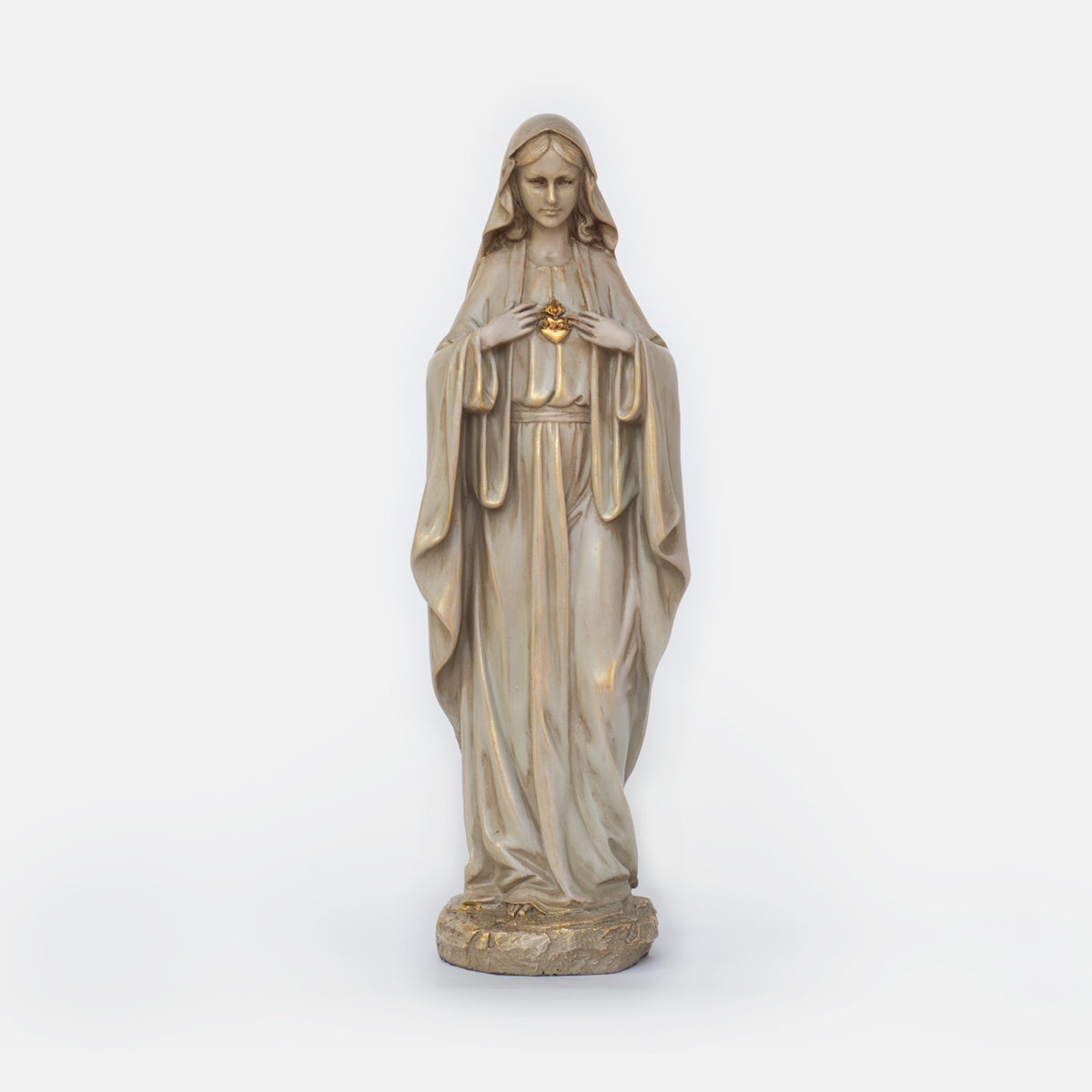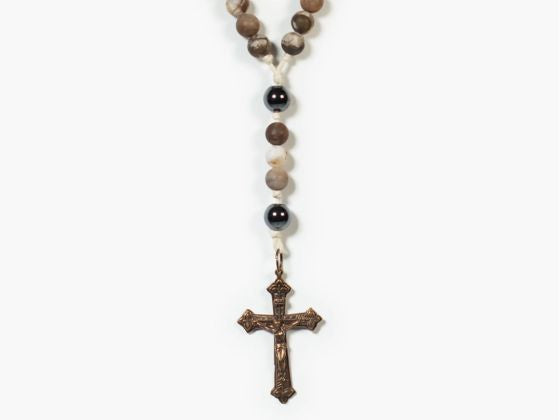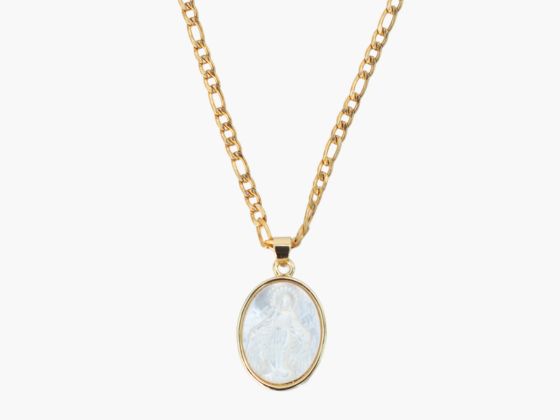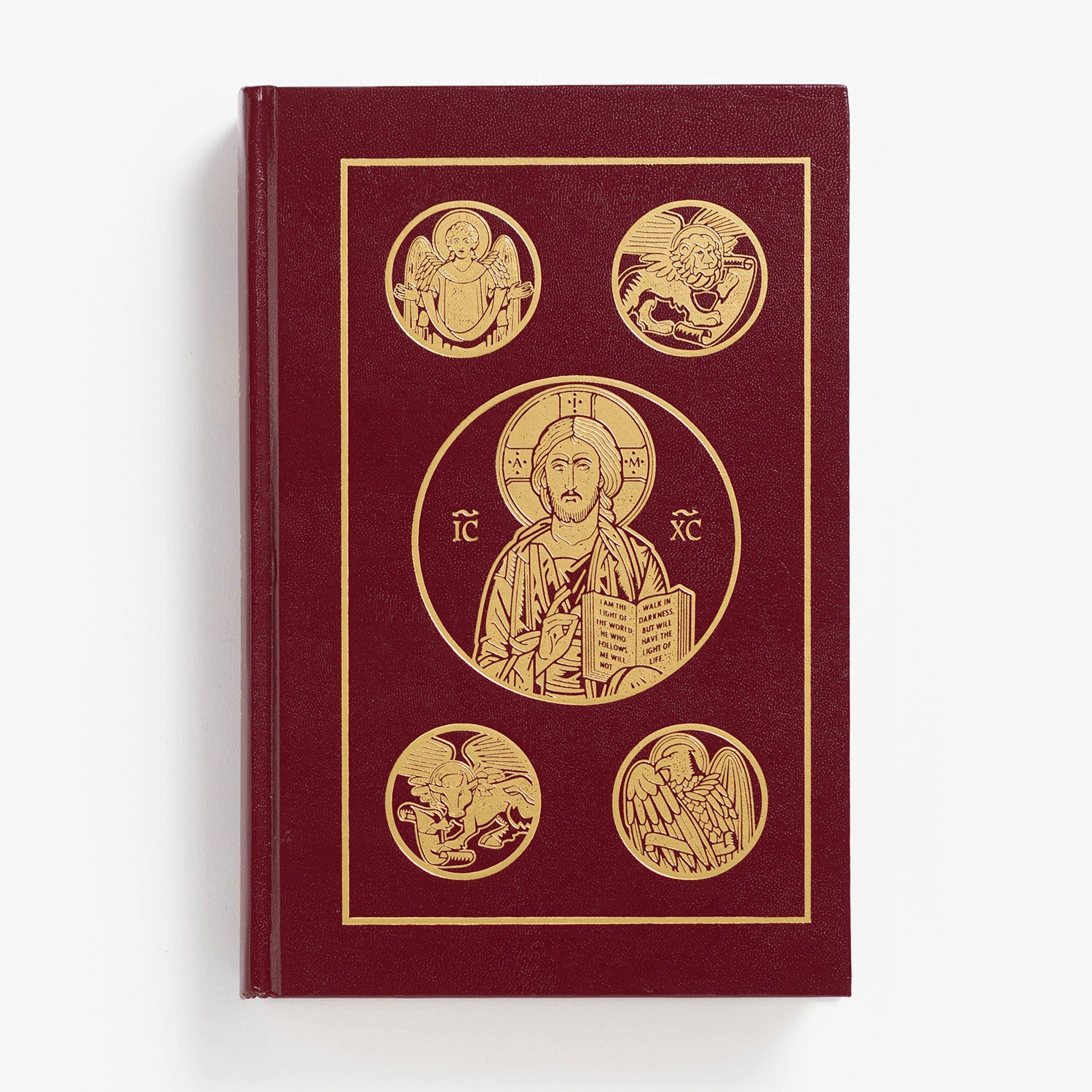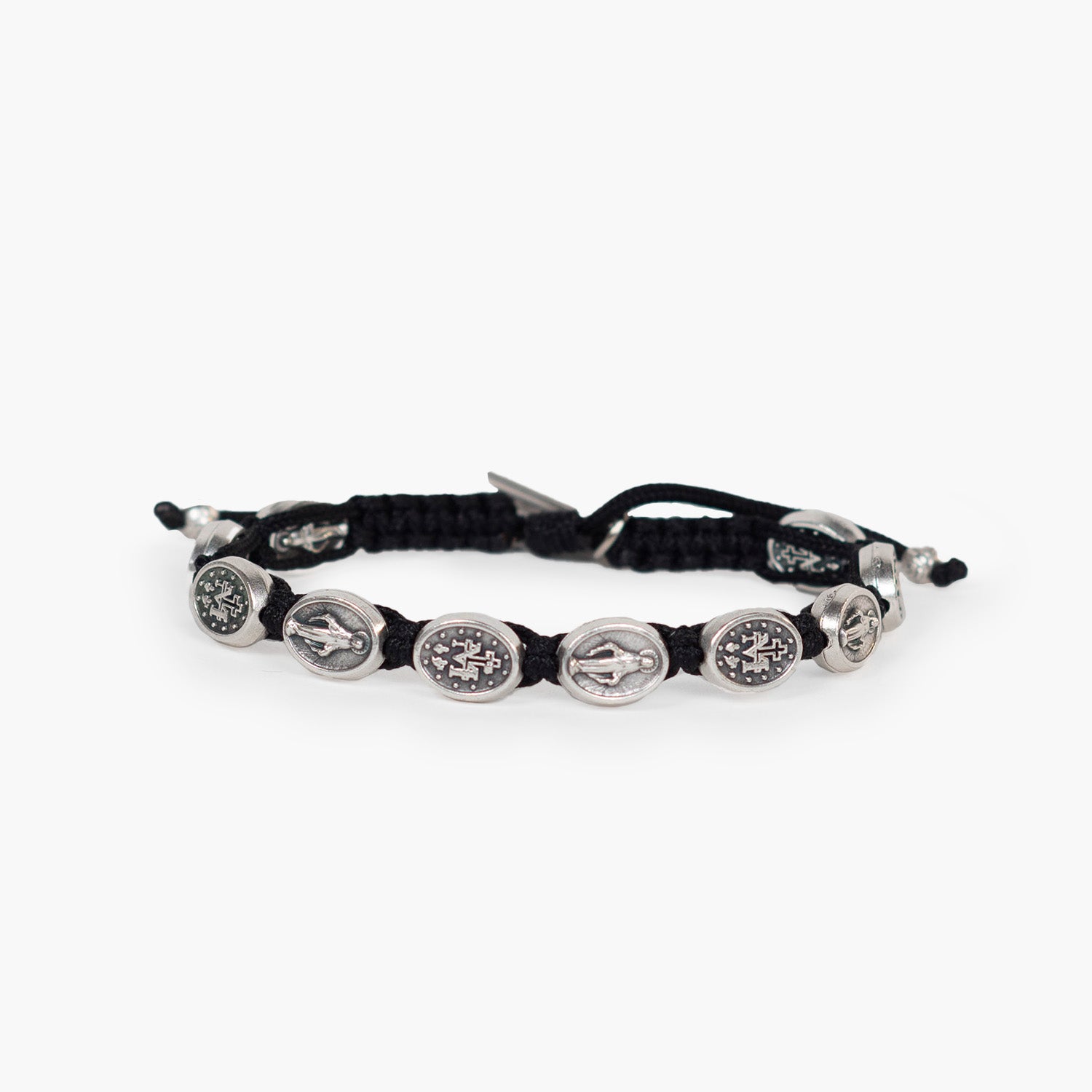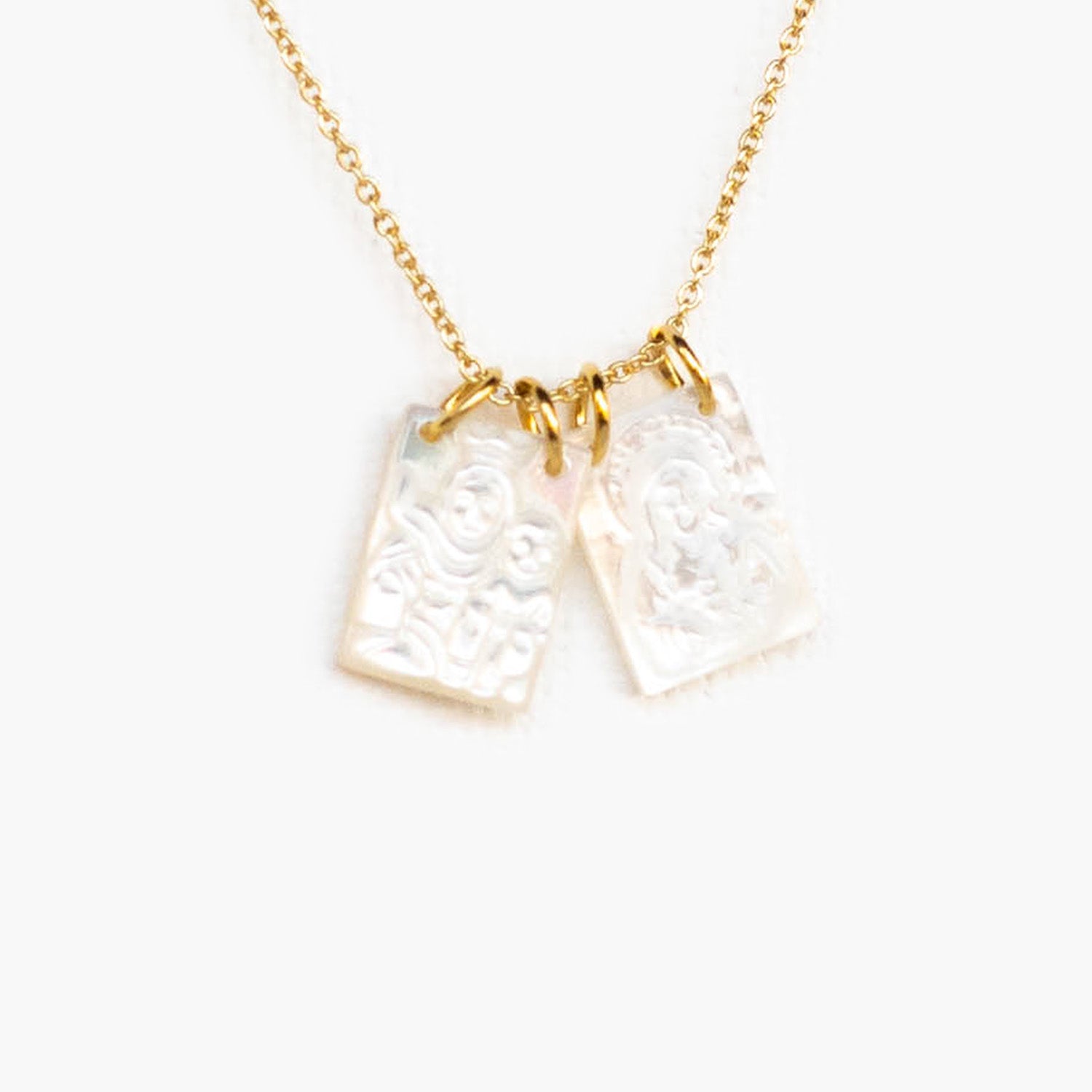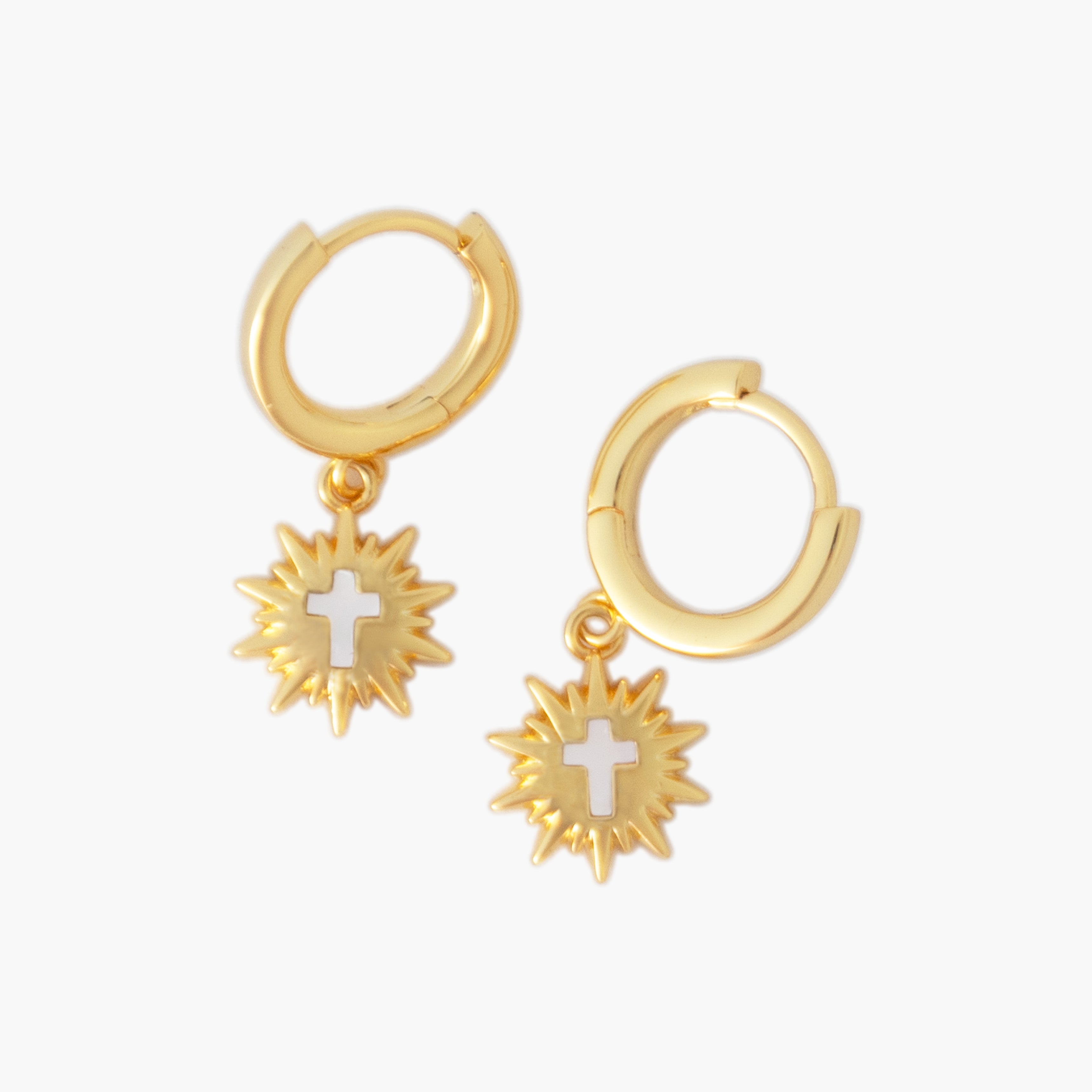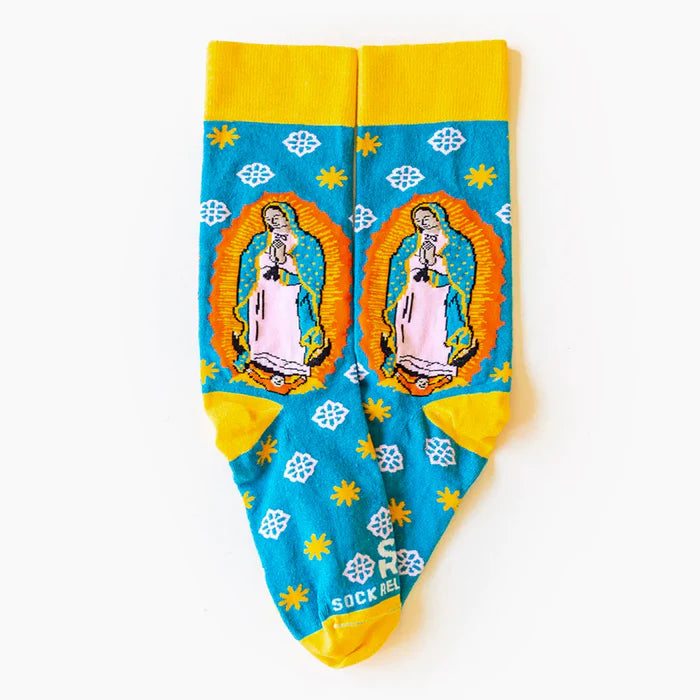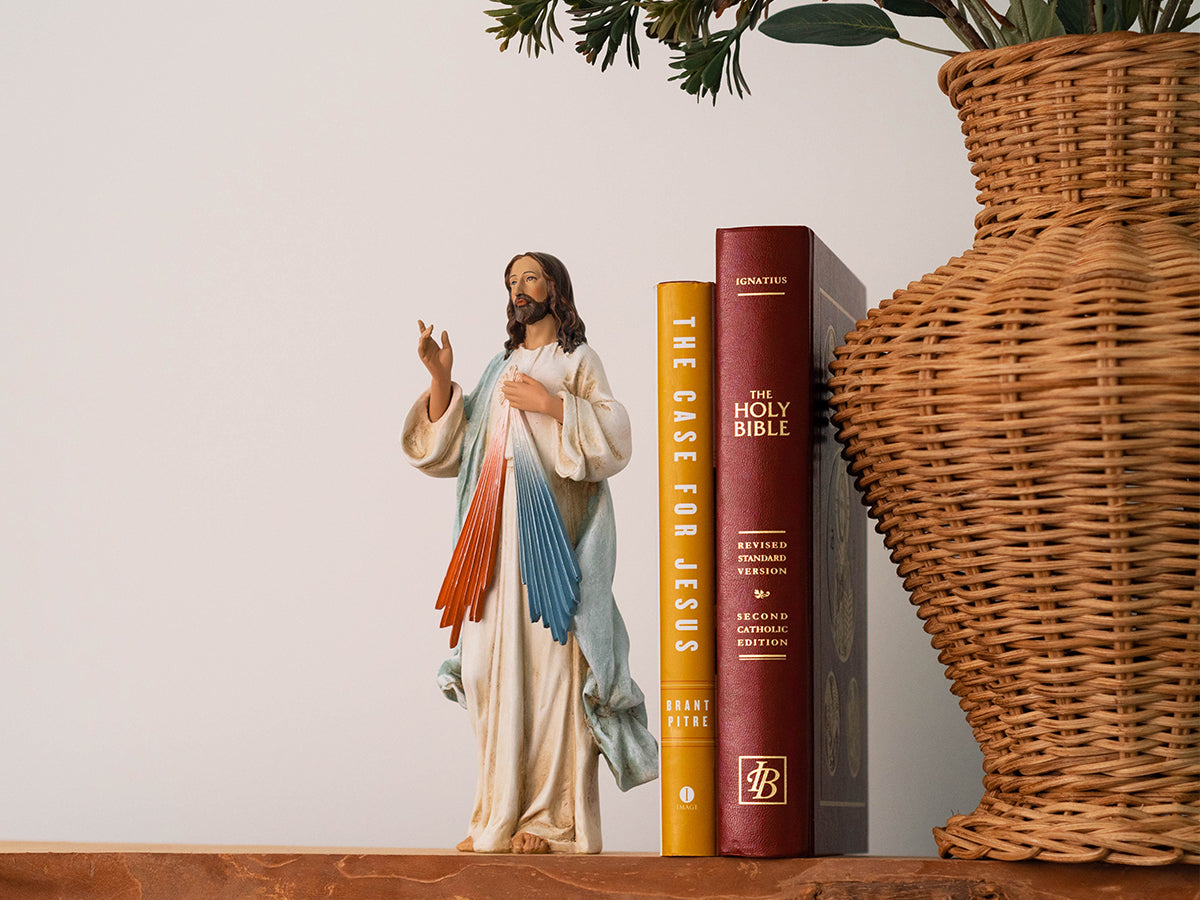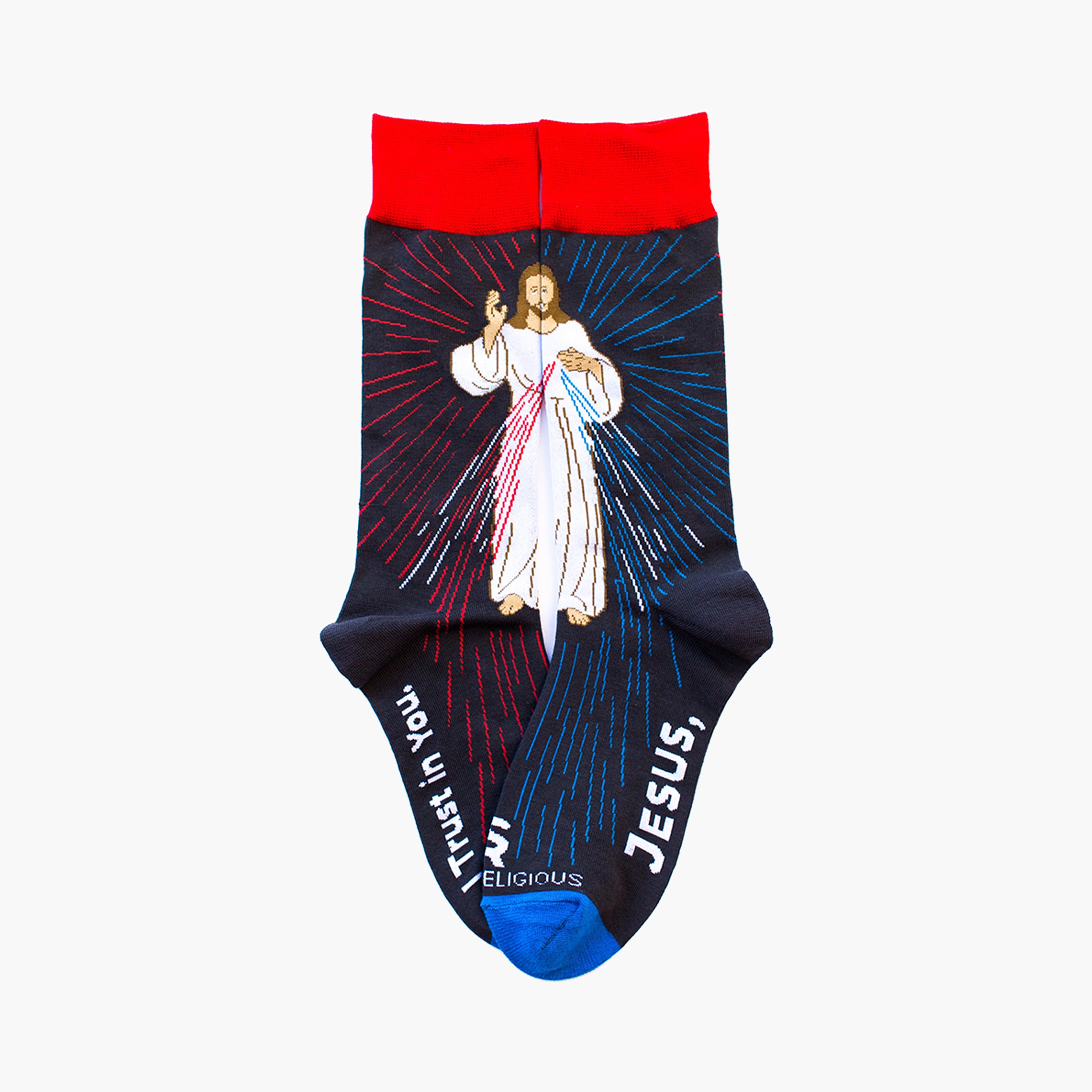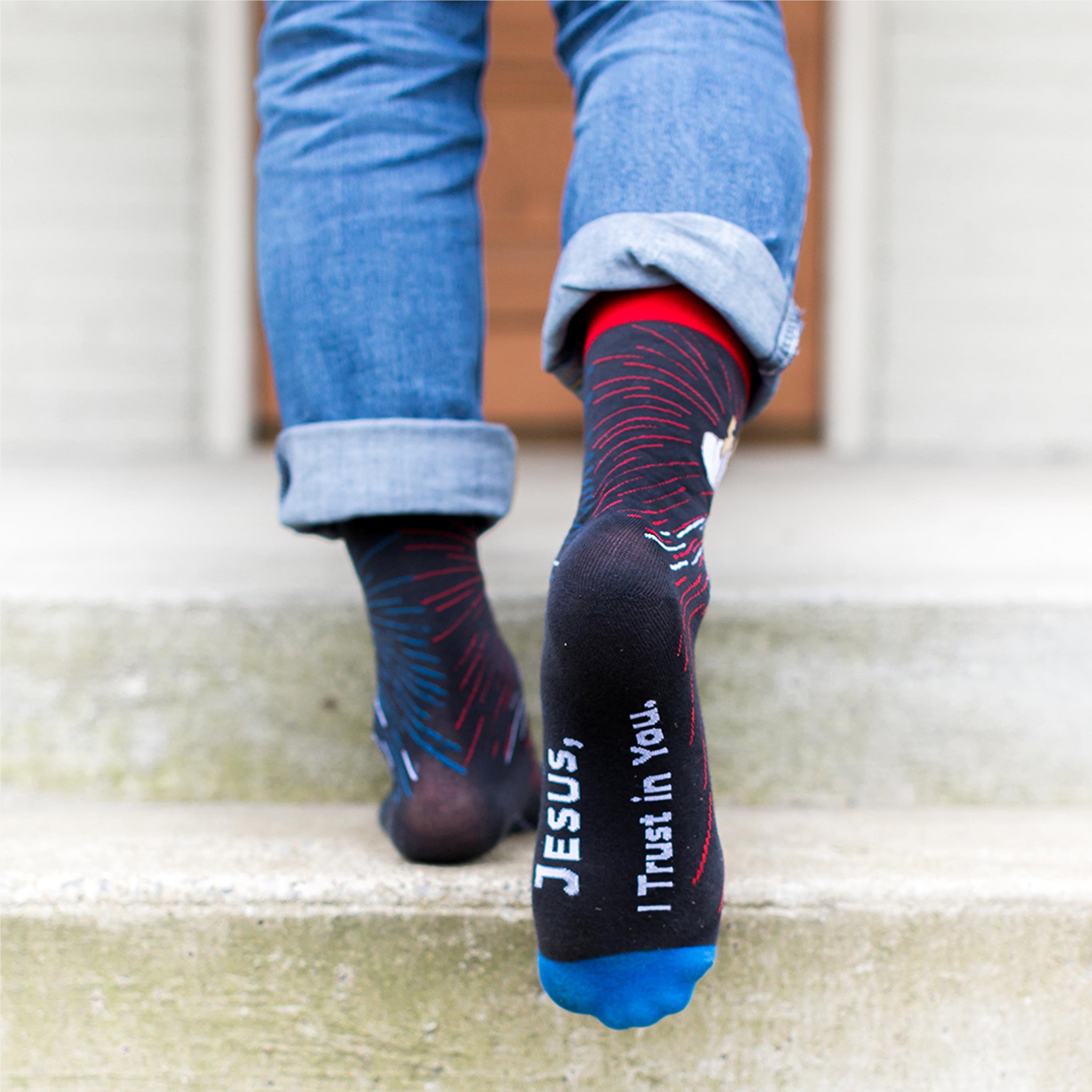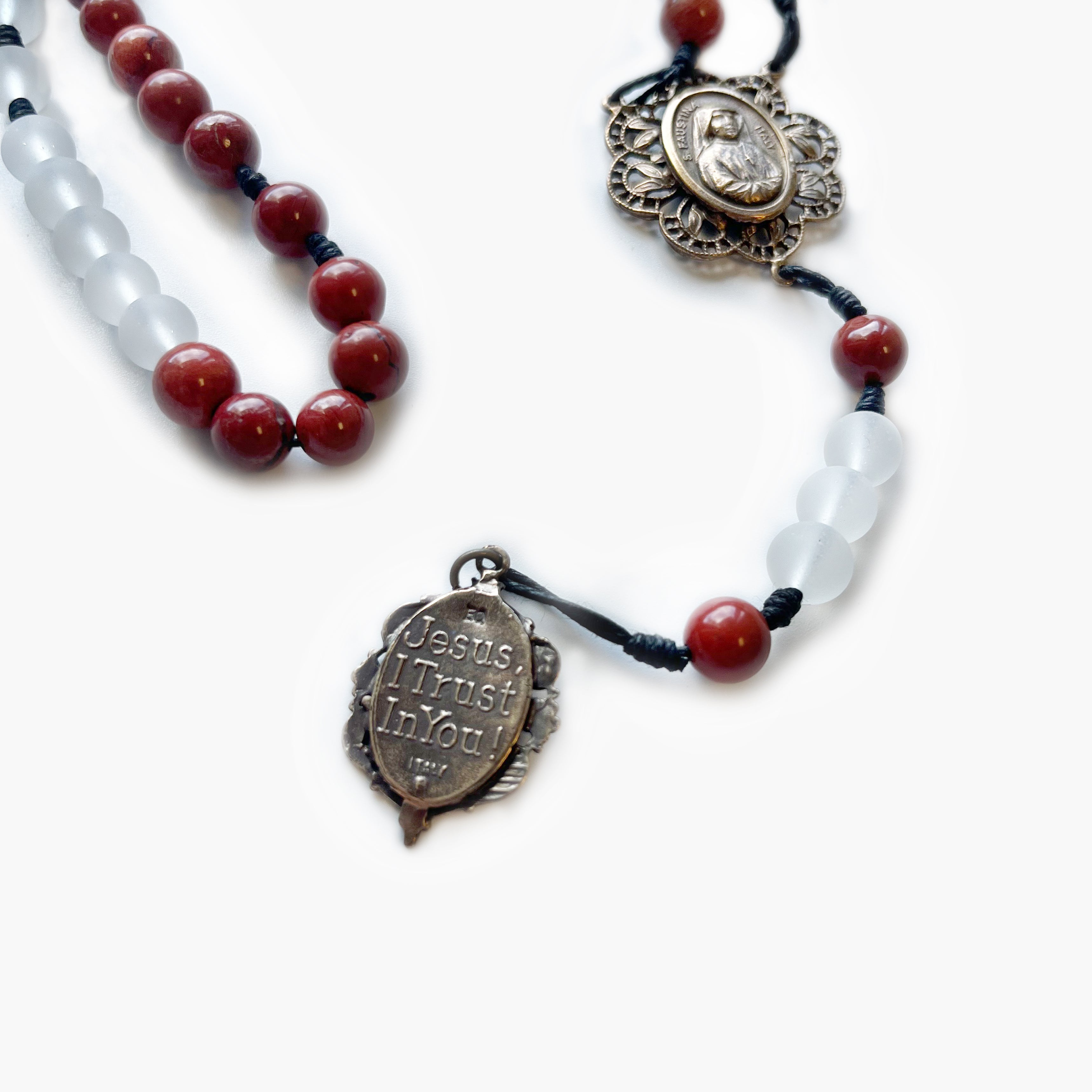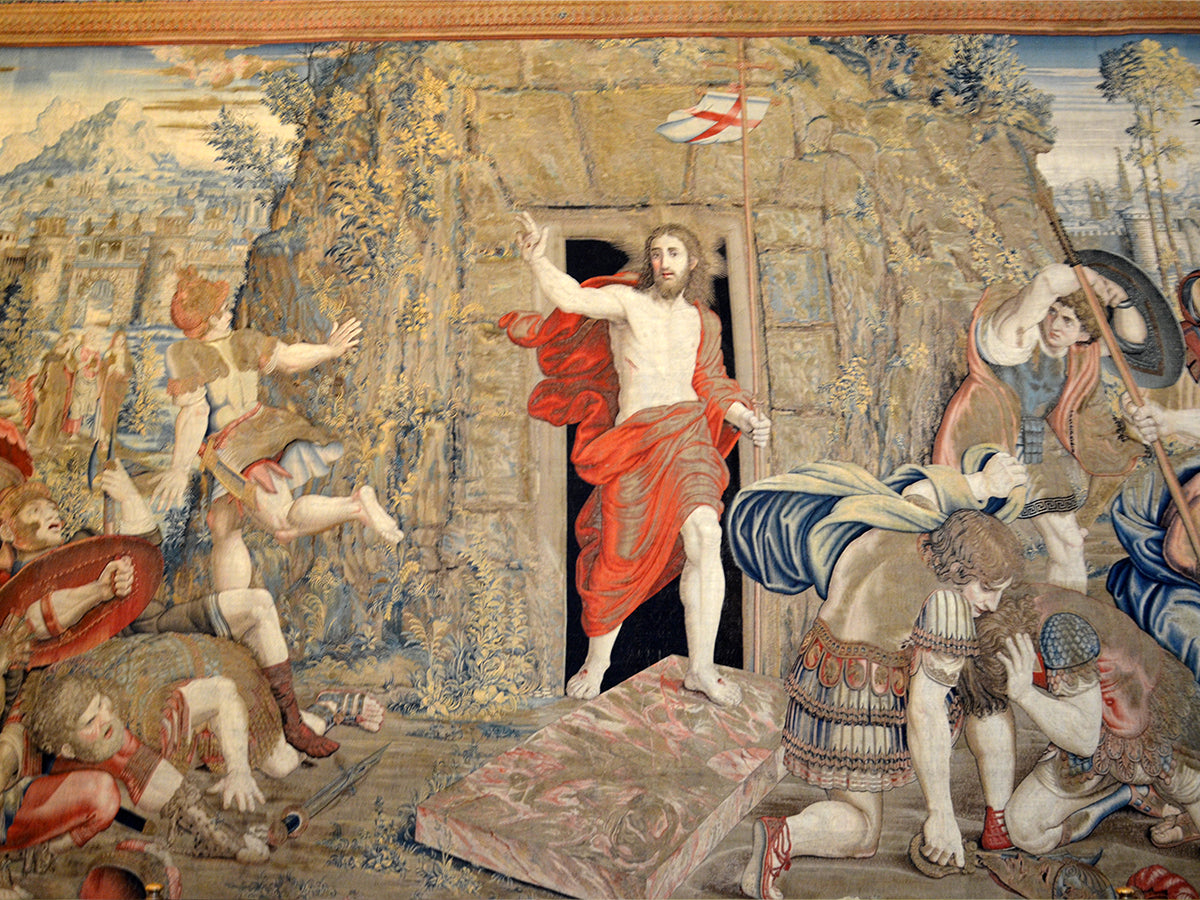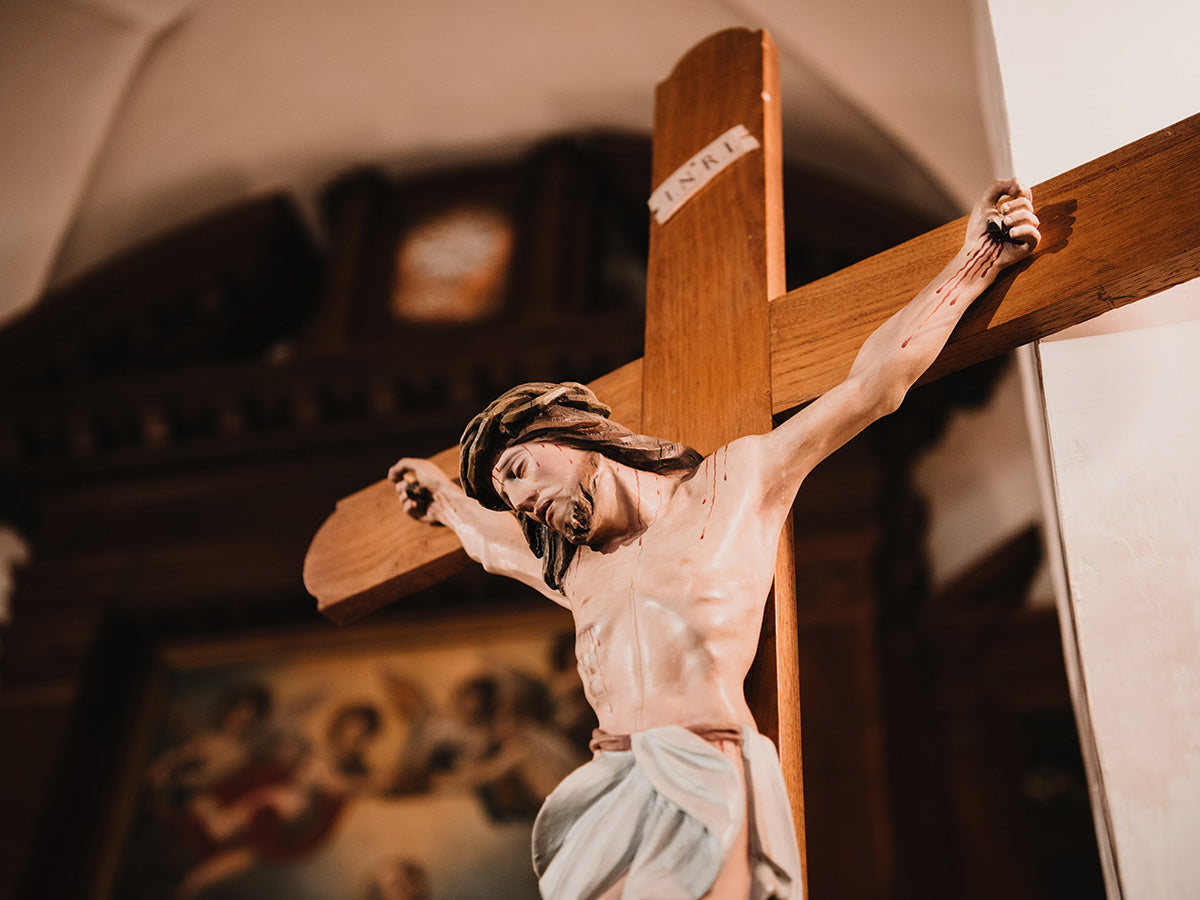If you want the full story about Jesus and St. Faustina, you can read it in her diary.
Amazingly, Jesus didn’t just reveal the image, he explained its symbolism.
Here are three aspects of the image to contemplate, in Jesus’ own words to St. Faustina. Use them to deepen your devotion to Divine Mercy. The numbers at the end of each quote refer to the paragraph in St. Faustina’s diary.
The rays of light
One instantly recognizes the Divine Mercy image with its two rays of light, one white and one red. They have a Biblical foundation. Jesus told St. Faustina:
“The pale ray stands for the Water which makes souls righteous. The red ray stands for the Blood which is the life of souls… These two rays issued forth from the very depths of My tender mercy when My agonized Heart was opened by a lance on the Cross (299).”
You can read about this moment in John 19:31-37, when blood and water gushed forth from the side of Jesus. In his words to St. Faustina, Jesus reveals that the lance went all the way into His heart. It was a profound “mercy moment.” God shows us mercy but not from afar — it comes right from the heart.
The face of Jesus
Jesus also told St. Faustina about His face in the image:
“My gaze from this image is like My gaze from the cross (326)”
Let that sink in.
When you look at this image, the face of Christ looks back at you as from the cross.
As you gaze prayerfully at the face of Jesus in this image, you practice a form of Catholic prayer called “visio divina.” Similar to “lectio divina” (praying with Scripture), “visio divina” means you contemplate the Faith by looking at an image or icon. It’s a great way to use your senses to draw closer to God. Gaze upon Jesus and rest in His mercy.
The wounds
Look closely at Jesus’ hands and feet in the image and you’ll notice the nail marks. (You can see them more clearly on some versions of the image than others.)
They’re part of the Divine Mercy too. Jesus told St. Faustina:
“My heart is sorrowful… because even chosen souls do not understand the greatness of My mercy… Oh, how much that wounds My Heart! Remember My Passion, and if you do not believe My words, at least believe My wounds (379).”
We humans like proof. The more of a thing we can see, the more we’ll believe it’s real. Jesus knows this human tendency perfectly. He knows how easily we forget the depths of His mercy. So He left a visible sign of it on His own body.
Pray with Divine Mercy
Jesus doesn’t just tell us He’s merciful, He shows us.
The rays of light. His gaze. His wounds. They’re all signs of His mercy. When you struggle to trust God, turn to the Divine Mercy image.
St. John Paul II once said, “Those who sincerely say ‘Jesus, I trust in You’ will find comfort in all their anxieties and fears.” May you too find comfort in our merciful Lord!






